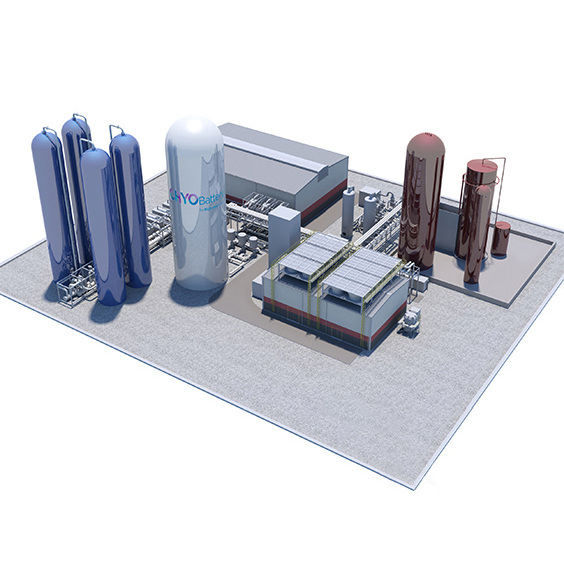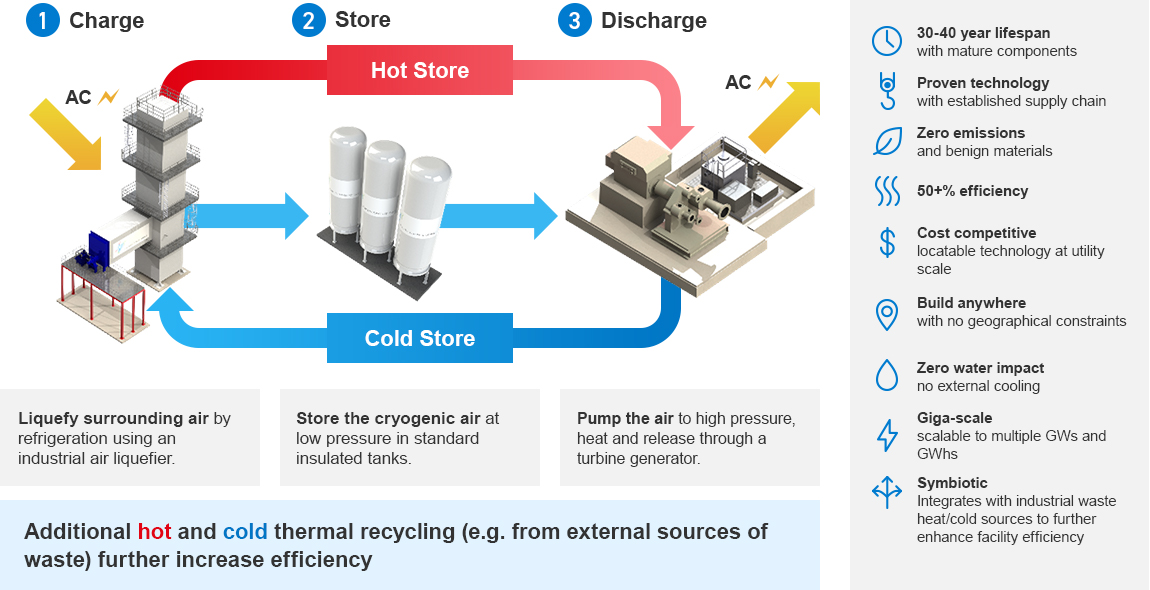Liquid Air Energy Storage (LAES)

Reliable & Cost-Effective Long Duration Energy Storage
Liquid Air Energy Storage (LAES) technology uses a freely available resource - air - cooled and stored as a liquid. When energy is needed, the liquified air is converted back into a pressurized gas which drives turbines to produce electricity. LAES is ideal for replacing fossil fuel-based power plants by providing long-duration storage in renewable power systems. It offers cost-effective supply-demand balancing besides ancillary services, such as grid stability, inertia, and reactive power.
We provides LAES as a turnkey EPC solution, including initial feasibility analysis and technology comparisons, optimal plant sizing, design, engineering, procurement, construction and commissioning.
Click here for detailed information about Liquid Air Energy Storage (LAES)
Features
- 1Competitive energy storage in large scale
A LAES plant typical size is 50 MW discharge capacity, 300 MWh storage, which translates to 6 hours of storage capacity. As the storage duration increases, more tanks are added at a relatively low cost, making the LAES technology increasingly competitive and scalable. Besides, the plant can support the re-energizing of a grid after a total black-out.
- 2Ancillary services to support grid operation and stability
As the share of renewable energy increases in power systems, grid stability becomes a growing concern. Fossil-based power plants with large spinning masses are replaced by inverter-connected power generation, such as solar PV and wind, reducing grid inertia and short circuit levels.
A LAES plant can provide a range of ancillary services, such as:
- Grid inertia, reducing the need for system operators to procure "Fast Frequency response" reserves, thereby providing an overall more economical system;
- Continuous reactive power compensation and increased short circuit levels in the area it is connected, reducing losses and improving grid reliability;
- Dynamic upward power regulation during plant charging and downward regulation during plant discharge.
- 3Performance longevity
The design lifetime of a LAES plant is typically 30 years, during which the performance can be maintained at high levels with negligible degradation over time.
- 4Flexible siting with a small footprint
With a small footprint and a high degree of freedom in siting, a LAES plant can be employed at a heavily loaded node in the grid. It can also be used in grid locations with high power flow but low short circuit level - as typical for inverter-connected generation or direct current (DC) links - improving grid strength.


